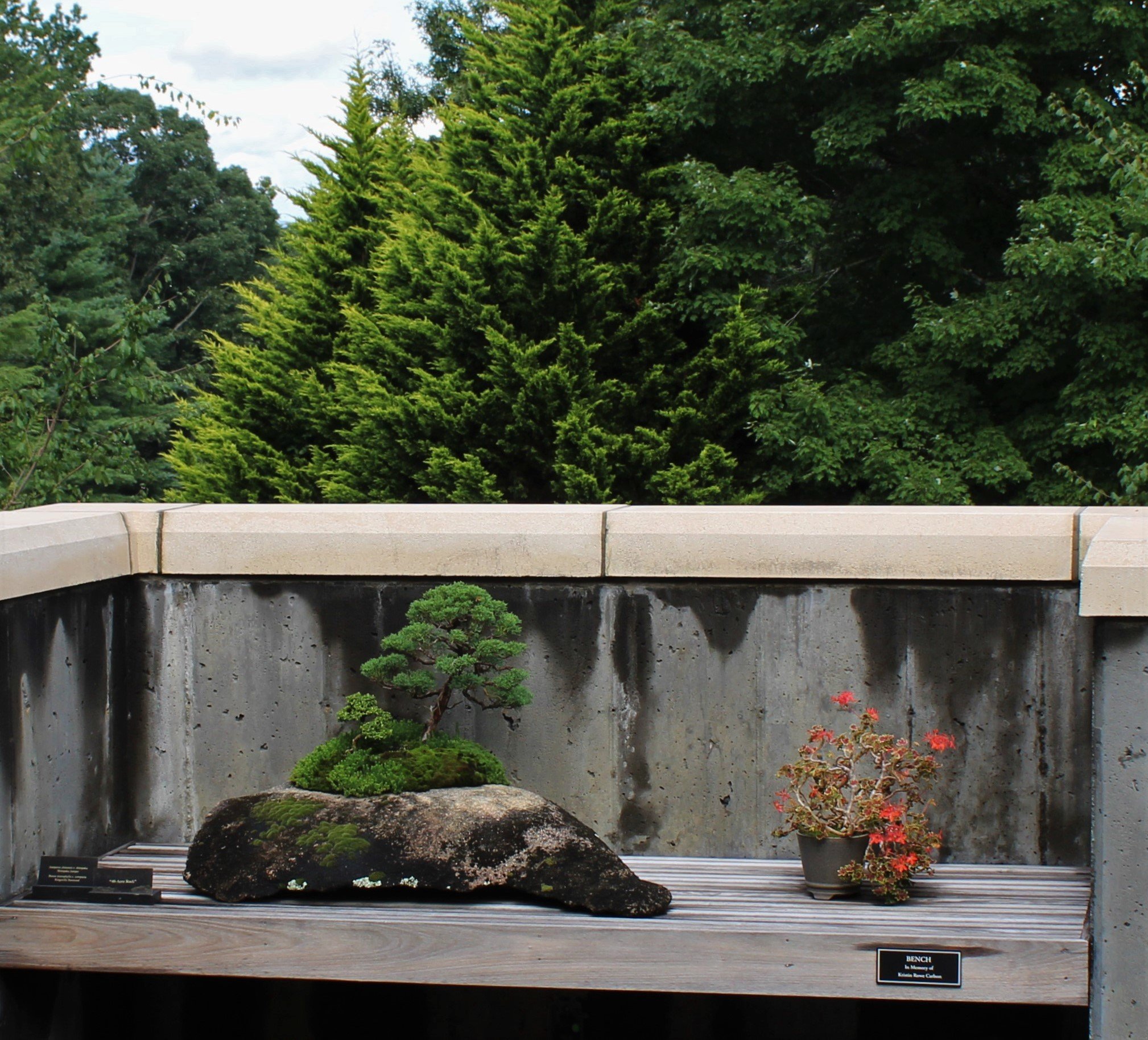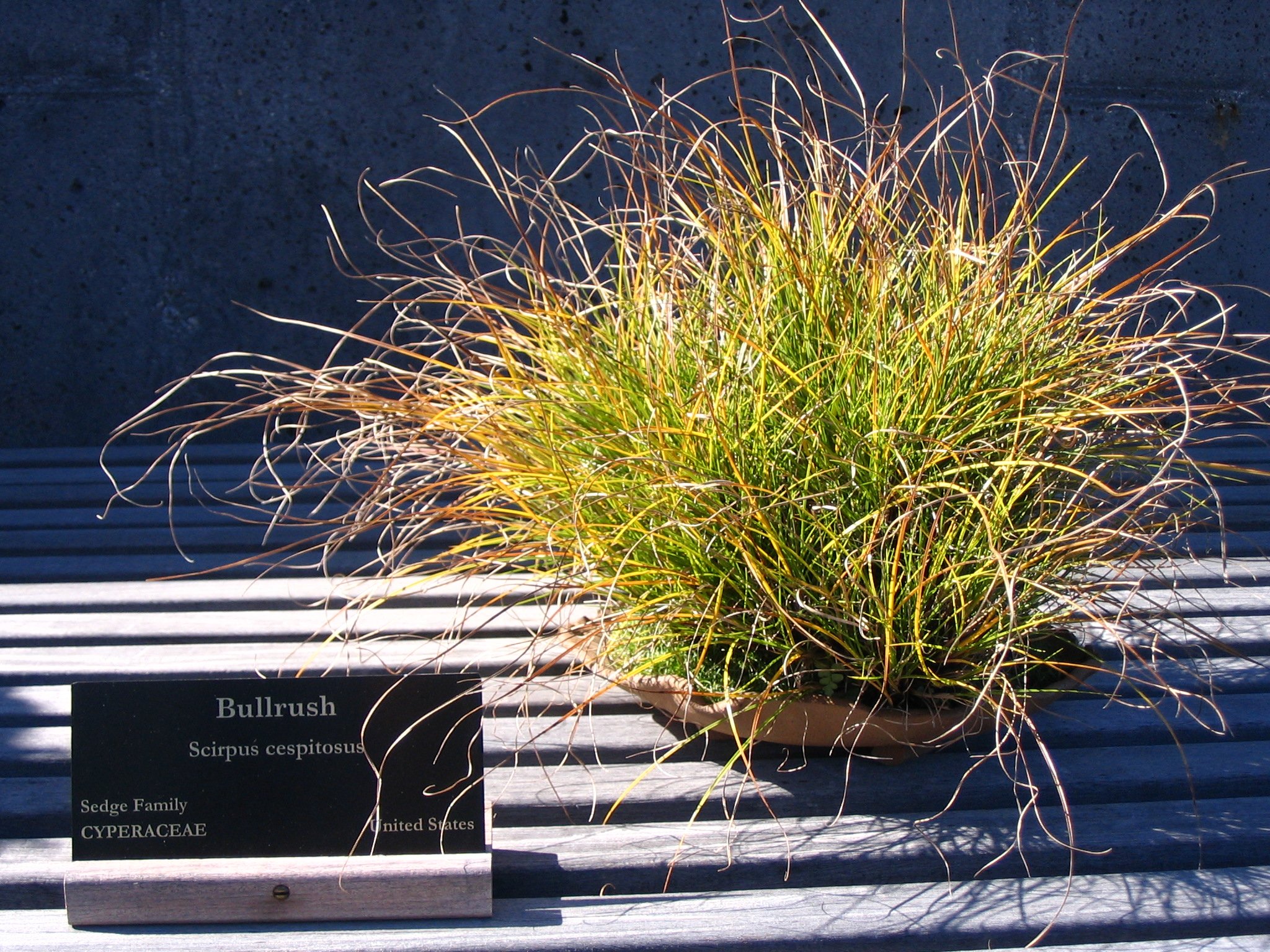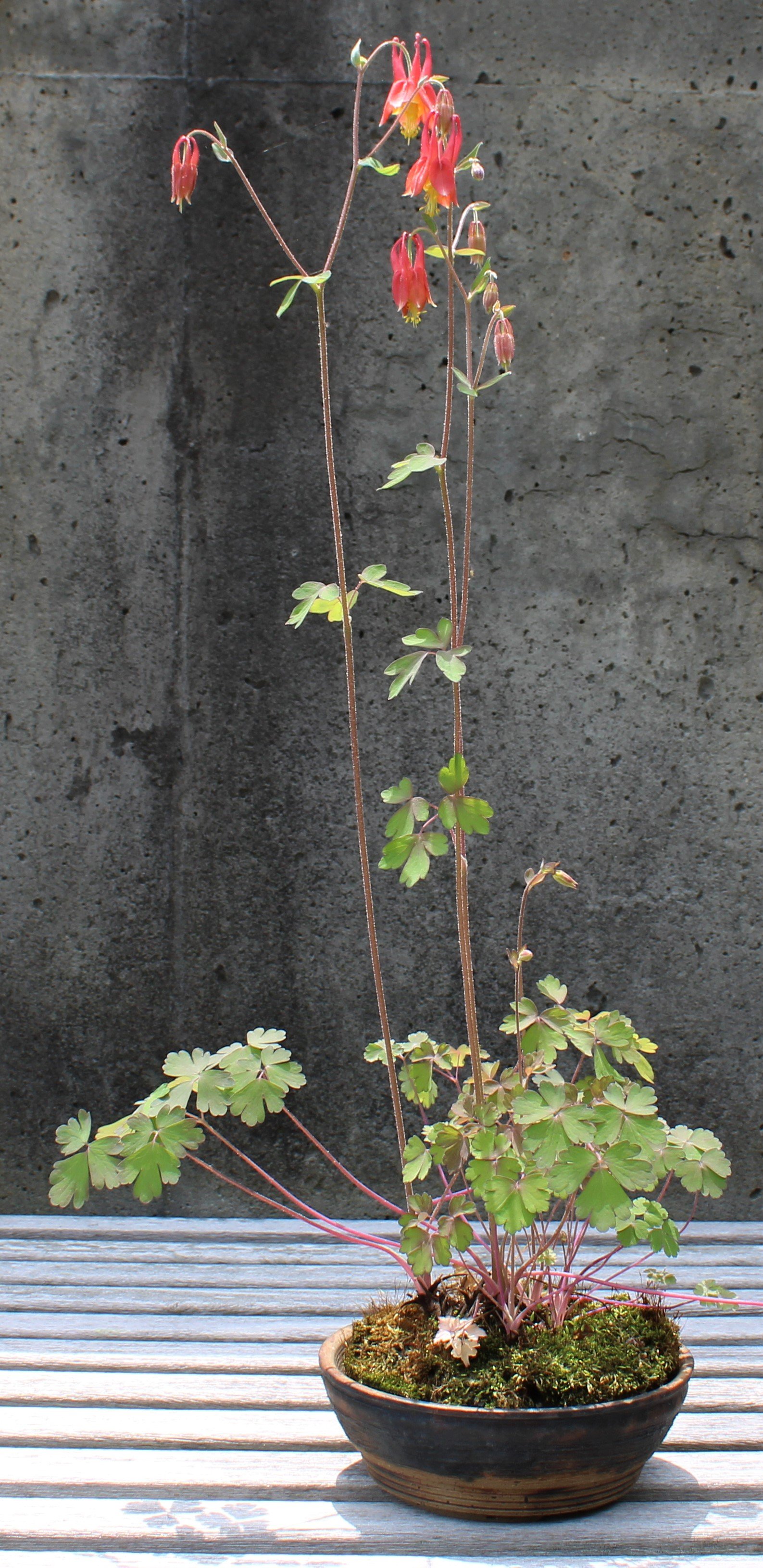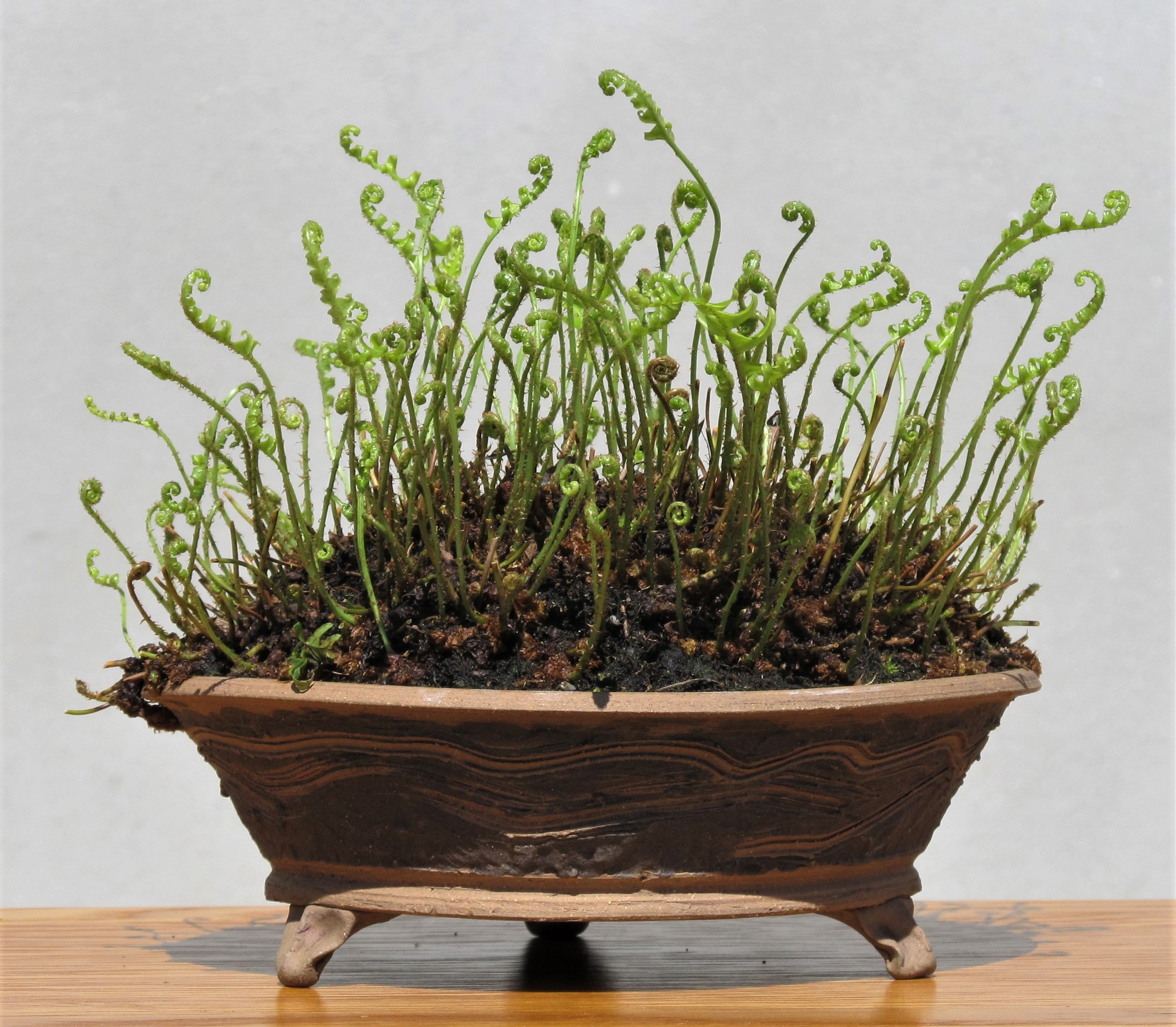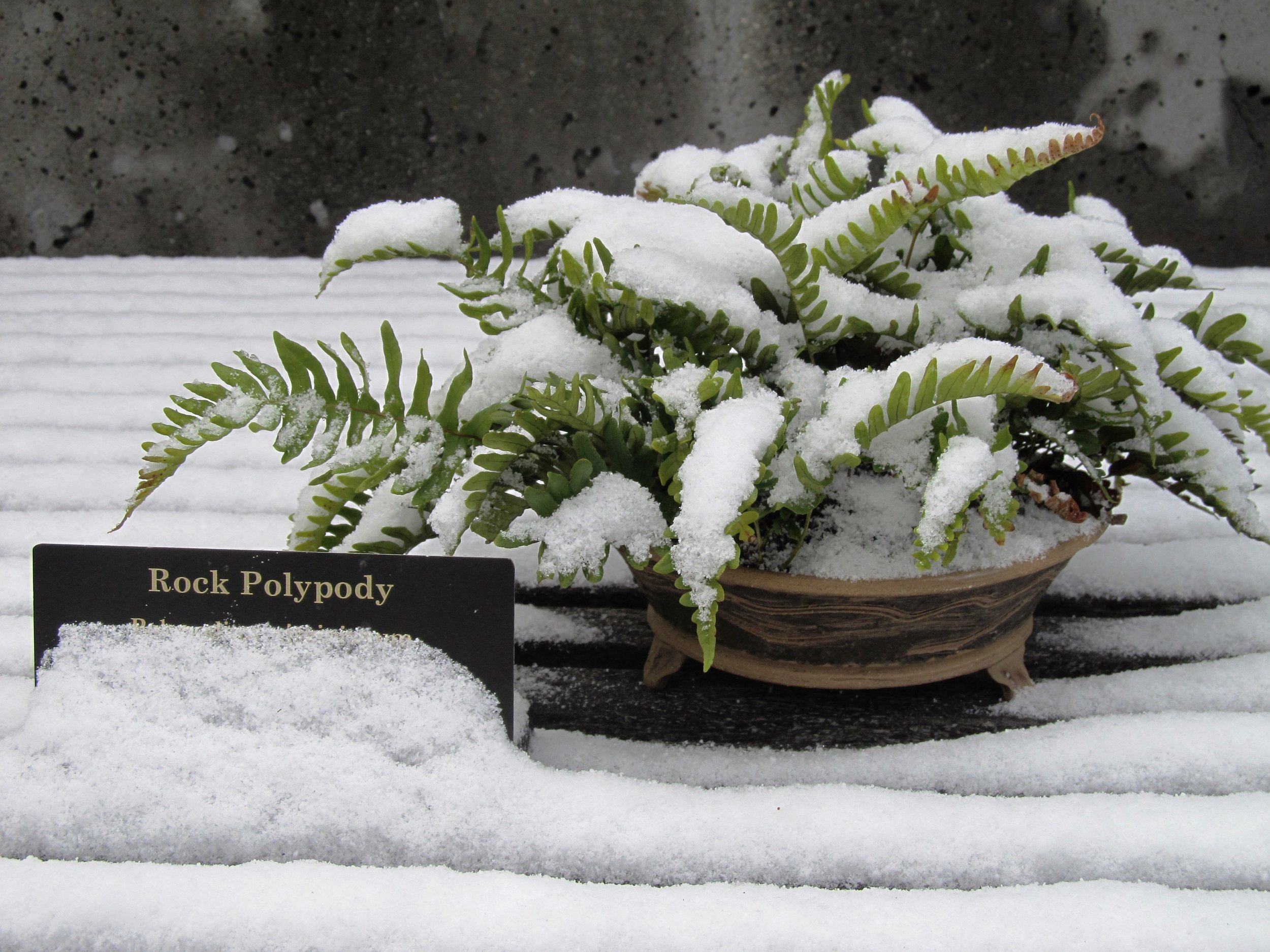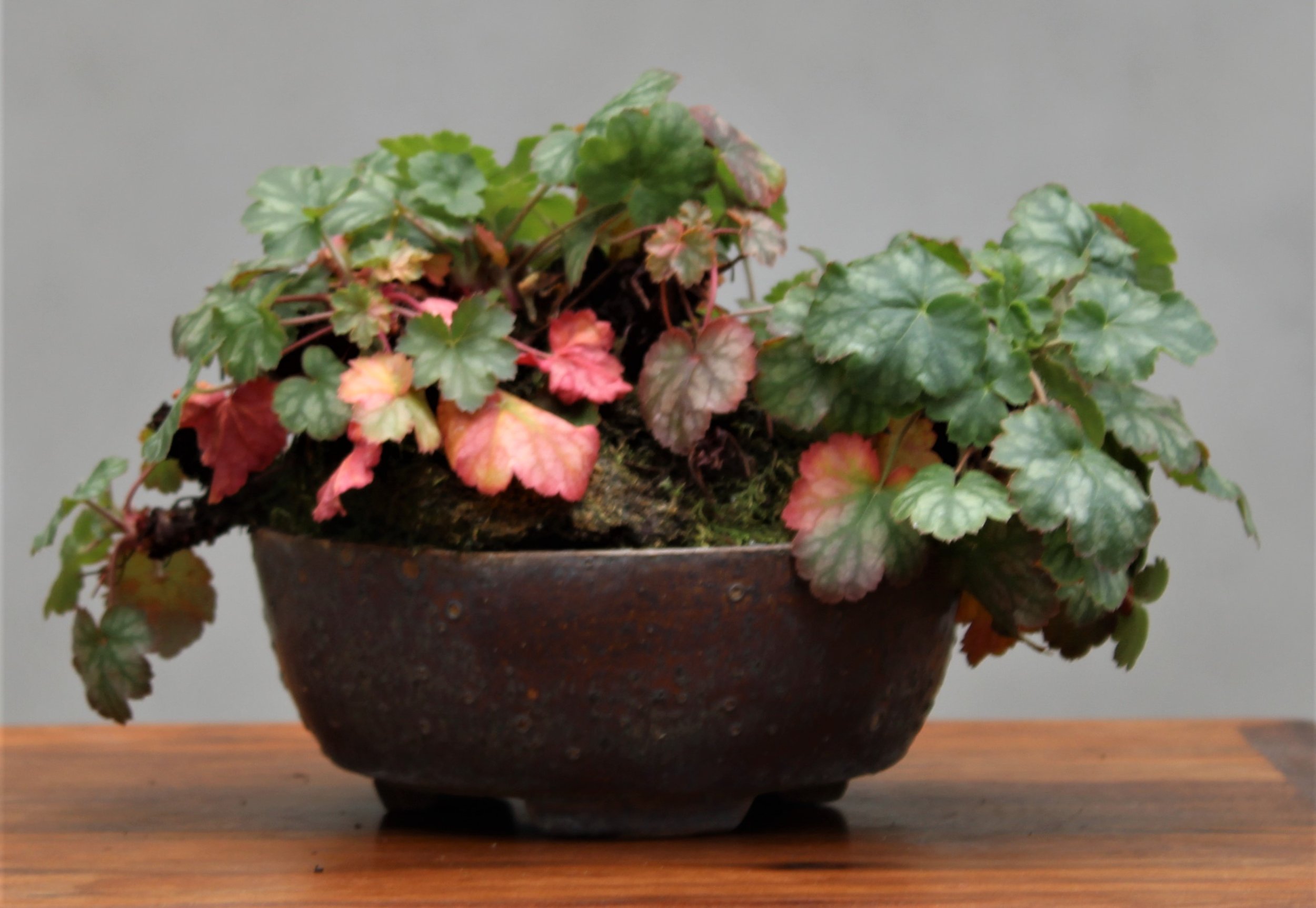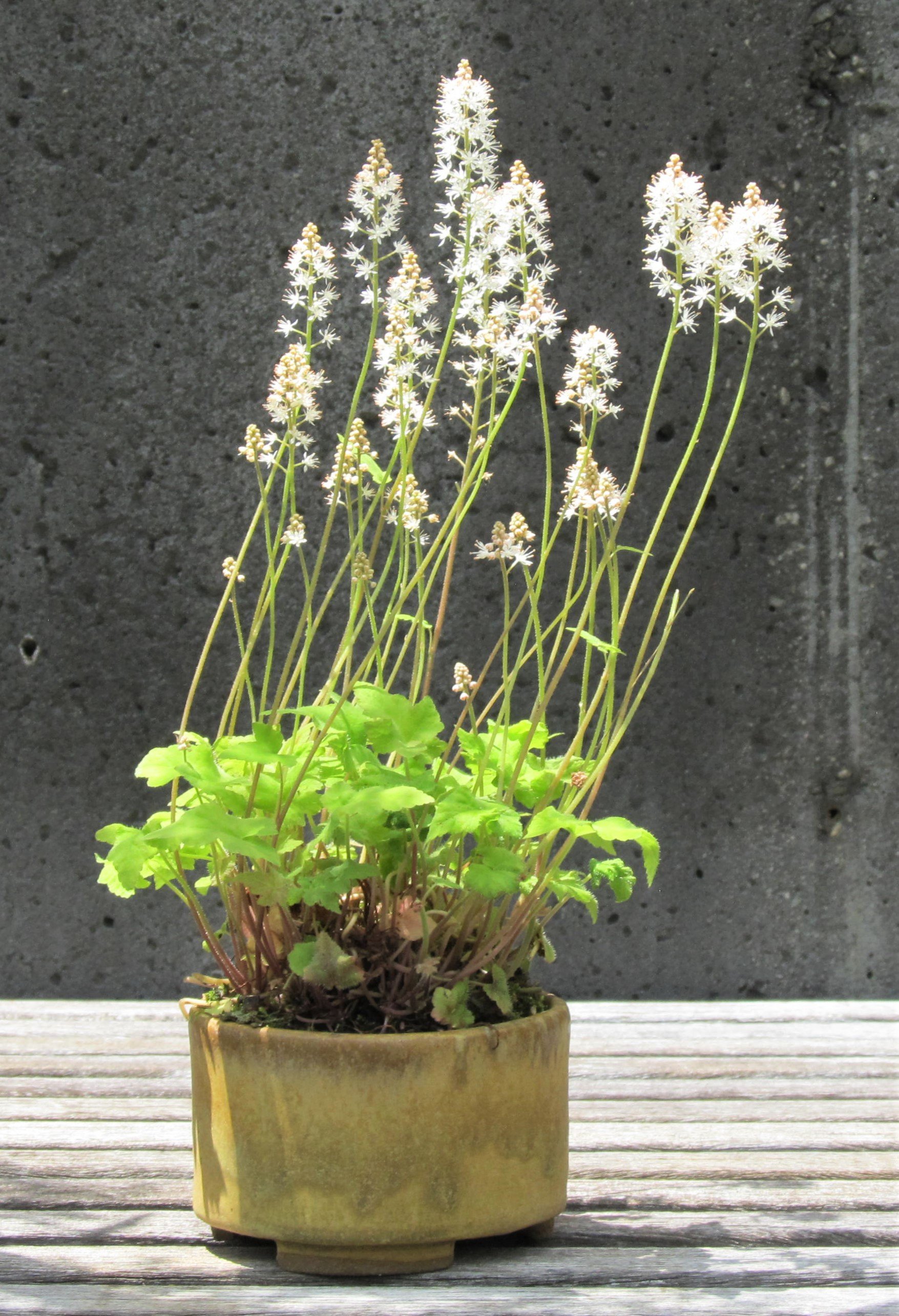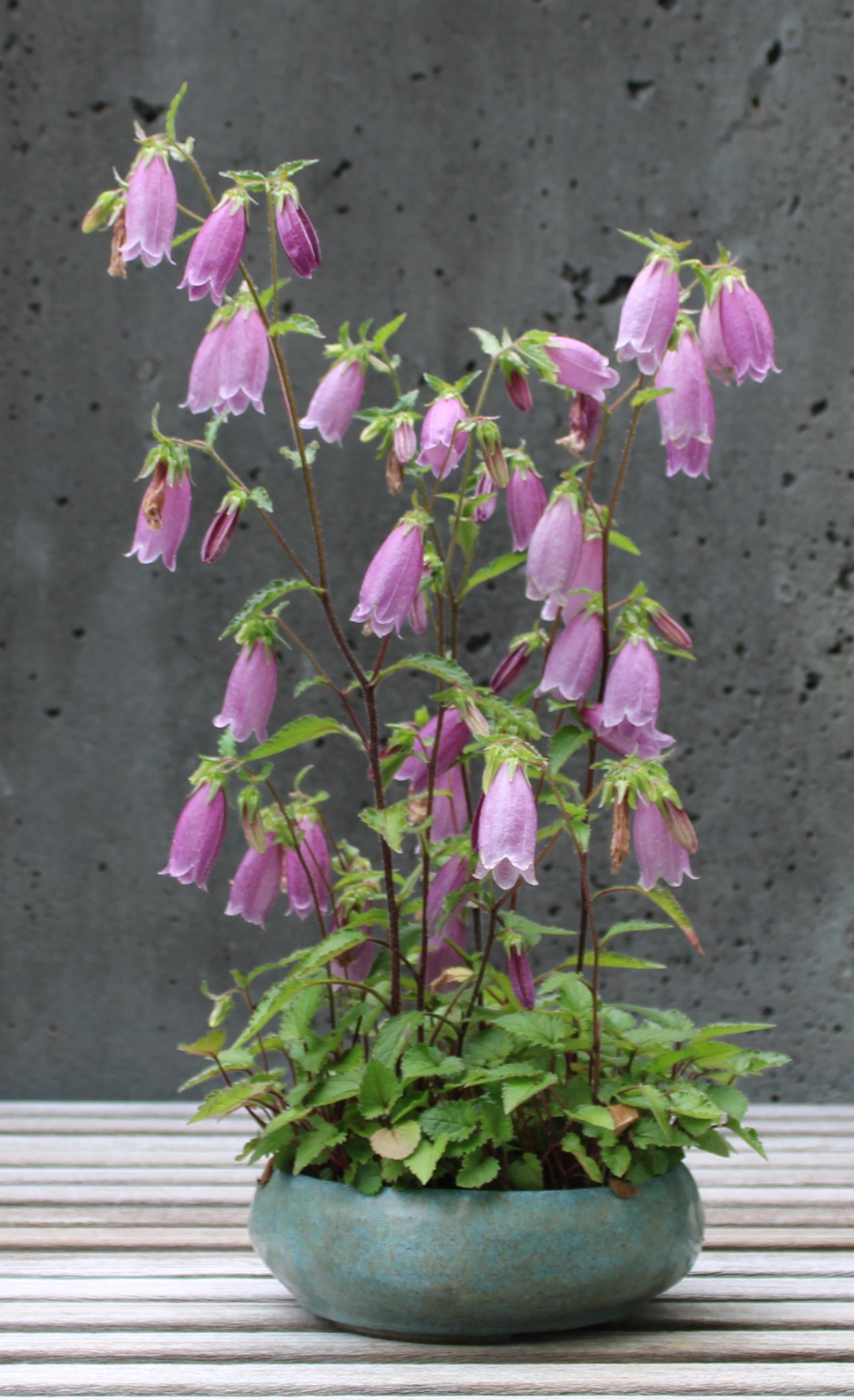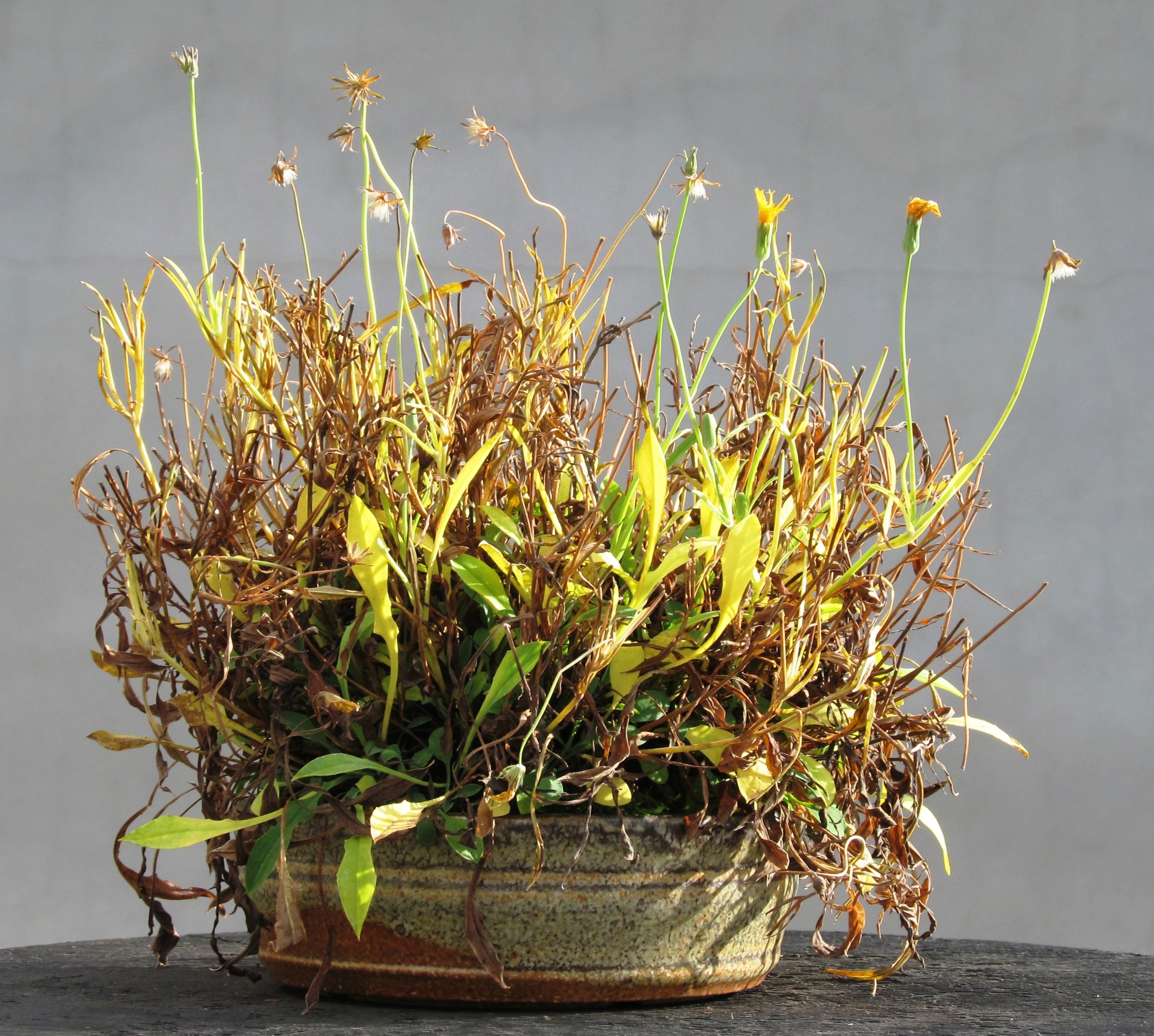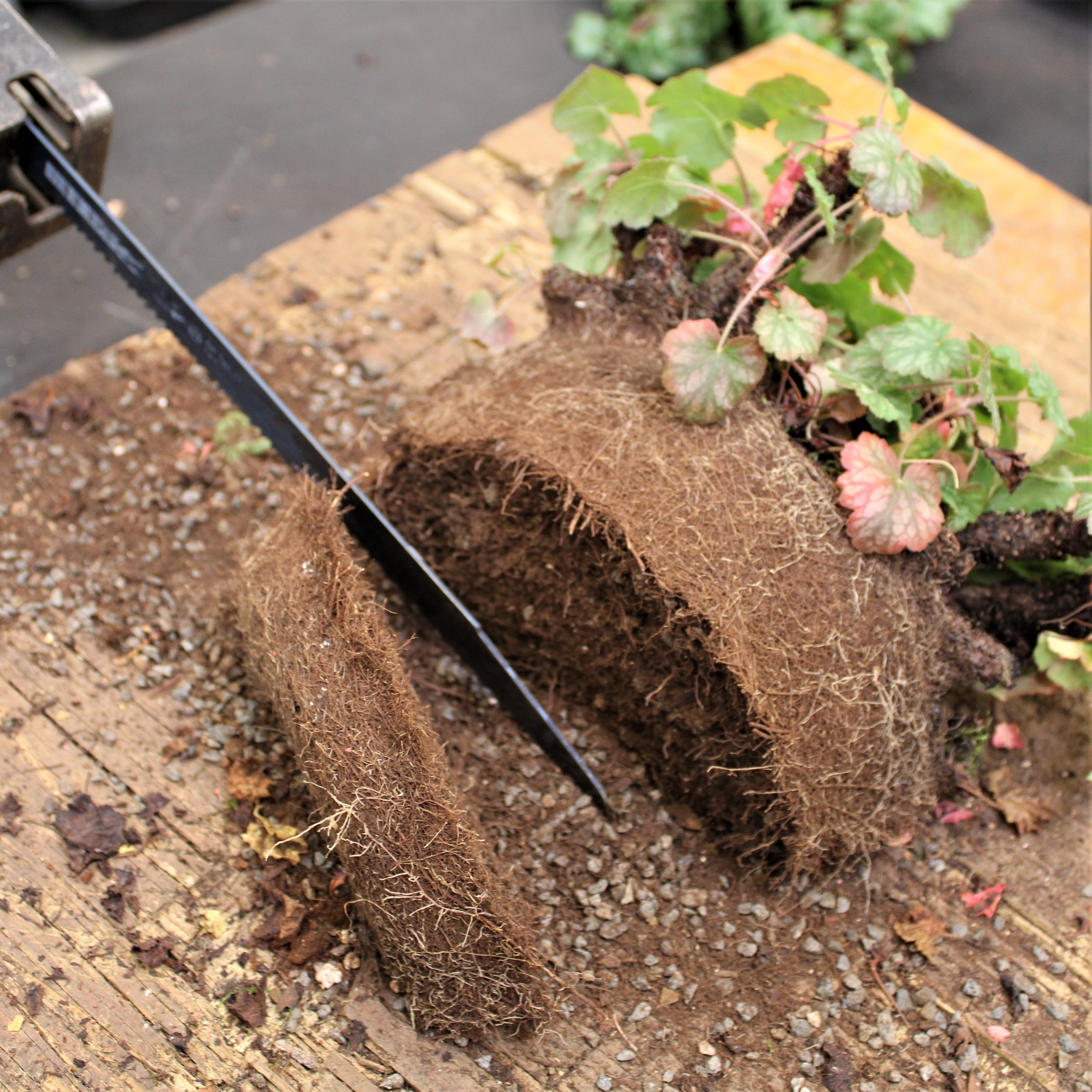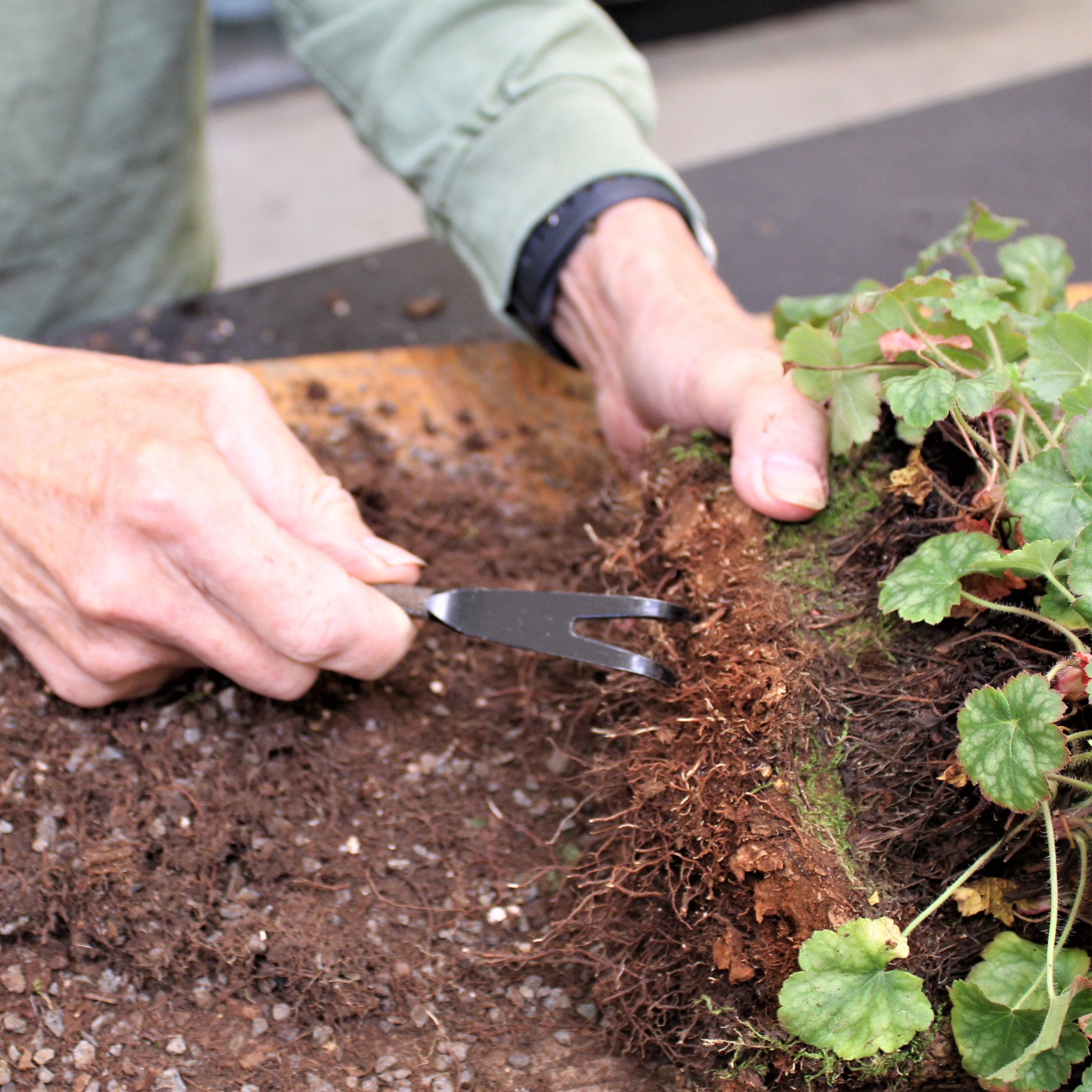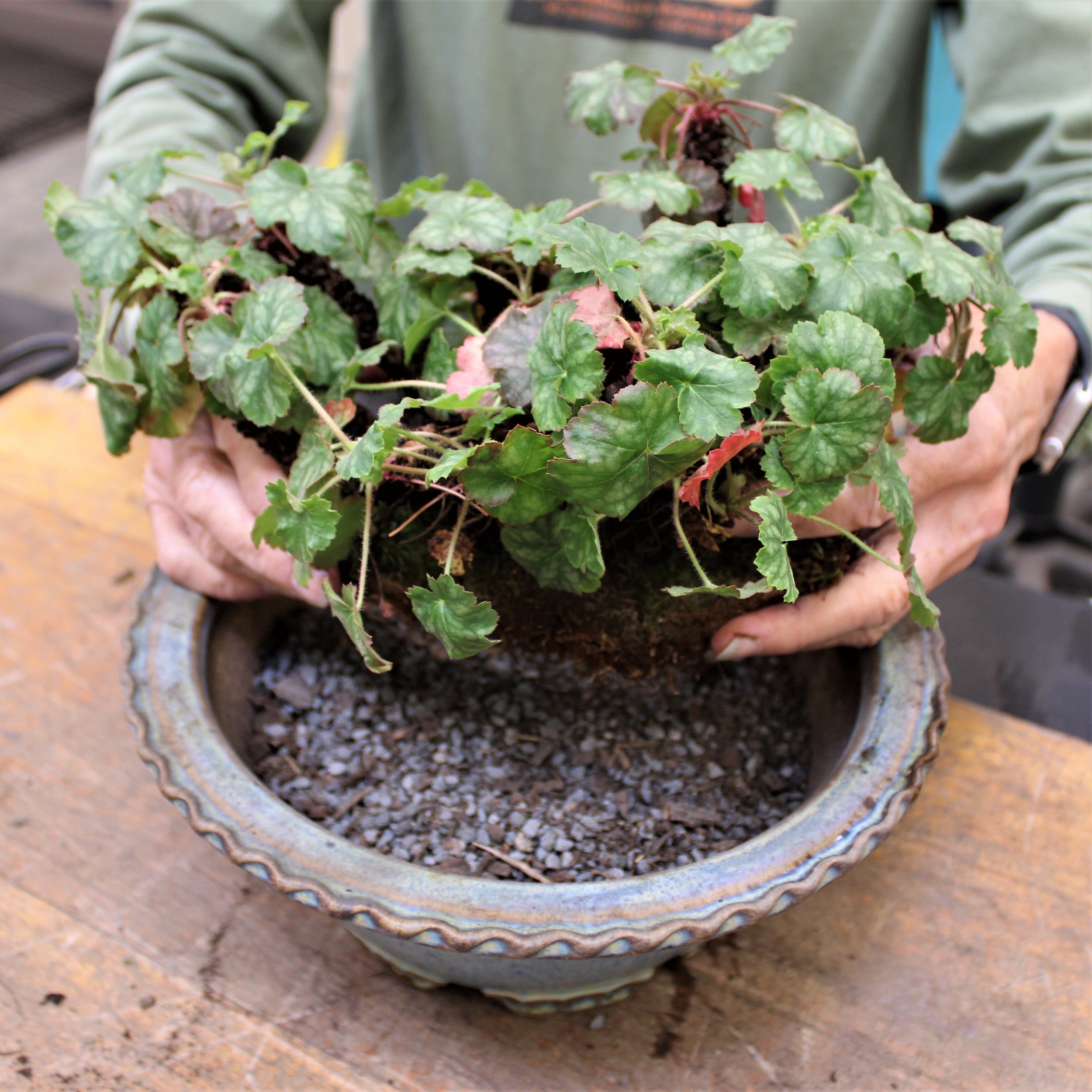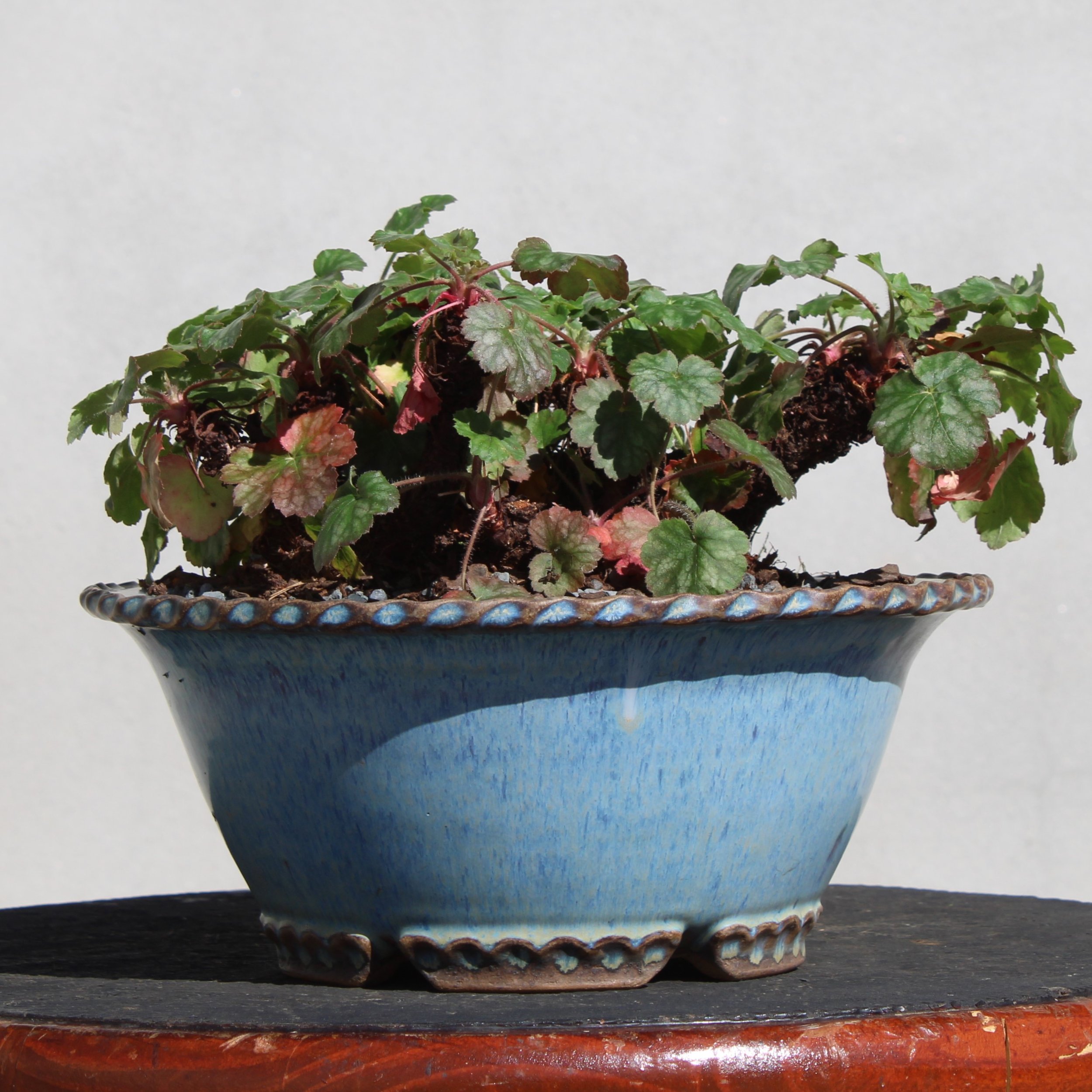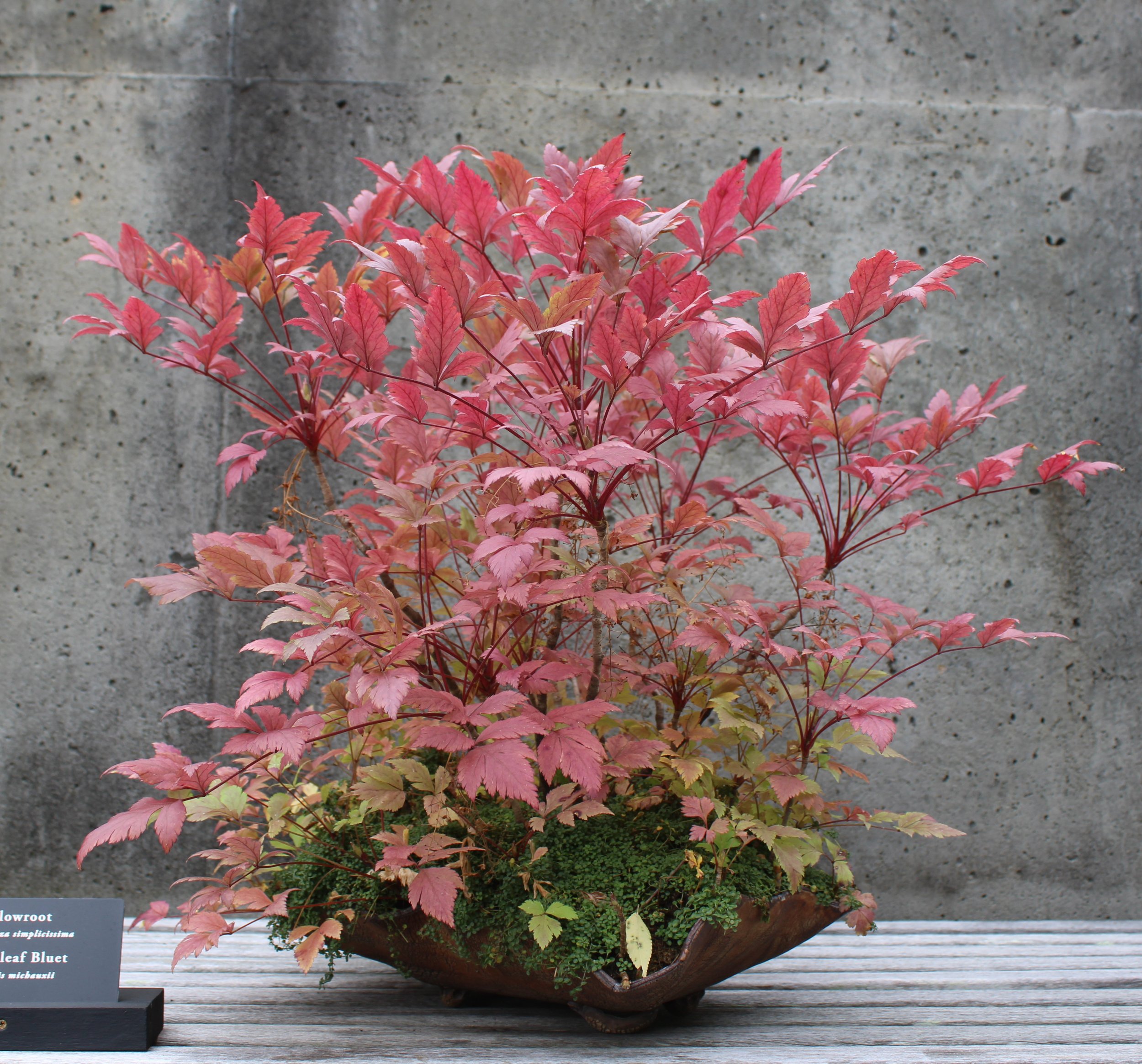Accent on Herbaceous
Recently two women were standing in front of a display in the bonsai garden and talking about one of the plants. "Is that a bonsai?" one woman asked the other. "I don't know. It looks like a houseplant," the other whispered back.
Then just the other day an email came and this is what it said: "Visited the Arboretum a few days ago and as usual I spent some quality time at the bonsai collection. I’m a garden designer and really appreciate the setting as well as the displayed bonsai works. I noticed several that highlighted herbaceous plants. I think one was Chasmanthium latifolium (sea oats) and the other a flowering perennial. I don't know much about bonsai, but I thought it’s done on long-lived woody plants. Is something new and interesting going on here??"
It might not otherwise have occurred to me to write about the herbaceous plantings that are typically scattered among the little trees on display in the bonsai garden. The Arboretum collection does not include many of these small potted perennials, although we have some and a few have been with us for decades. Are they bonsai? The answer to that question depends on whom you ask. Some people might say the herbaceous plants are not bonsai in their own right, but rather something used in association with bonsai when making a display. When bonsai folks participate in shows they will often have a little herbaceous plant next to their tree, just as they might otherwise use a figurine, viewing stone or graphic image to augment and enhance the presentation of the tree. Used this way, the little herbaceous plantings are often referred to as accessory or accent plants.
We use them that same way in the bonsai garden. The herbaceous plantings are often attractive for seasonal interest in the form of flower or foliage, but they are usually not meant to be the main attraction. Sometimes they are simply filler — a place on the bench seems a little empty, but adding another bonsai would make it too crowded. An herbaceous plant might be employed to fill the space pleasingly. Other times the herbaceous plant might harmonize well with a certain bonsai, so the two are shown next to each other and are meant to be seen as a pairing.
To say the herbaceous plantings are accessories or accents or even filler can seem a little dismissive. They have their own merits and can be appreciated for what they are. If we think of bonsai as being a miniature, living expression of the human experience of nature, why should herbaceous plantings not be included? The herbaceous species grown to be accent plants will after some years shrink their leaf size and overall stature, becoming miniature examples of what the same species are in nature. They are typically grown in smaller versions of the same shallow decorative pots as are used for bonsai trees. Herbaceous plants also call for maintenance — although not nearly as much as bonsai made from woody species do. The infrequent pruning required is for appearance sake, keeping the plant compact, deadheading and removing leaves that are too large, faded or otherwise damaged. It takes some horticultural skill to grow any plant in a pot and more skill than that to grow herbaceous bonsai.
Herbaceous bonsai? Really?
I have had some conversation about this with other bonsai people and find few takers among them for the idea of herbaceous bonsai. From what I can gather the main objection is that growing accent plantings is too easy. It takes many years to build a fully-realized bonsai, even a simple one, but take an herbaceous plant, stuff it into a little bonsai pot and there you go. A bonsai requires a design scheme, detailed pruning and the application of various specialized training techniques like wiring, whereas none of that is necessary or necessarily even possible with an herbaceous plant. I would not argue about any of that, but I do wonder if difficulty is a legitimate part of what defines bonsai.
A few lines back I wrote of bonsai being "a living, miniature expression of the human experience of nature." That is my own construction, arrived at decades ago after being repeatedly asked to define the term bonsai. In full, here is how I phrased it: "At its best, bonsai is living art, expressing in miniature an experience of nature." There are details that might be added to that definition to flesh it out, such as the desirability of employing a plant that does not have its roots in the earth, but I was aiming higher. More prosaic definitions can be easily found by doing an online search, or perhaps the literal translation of the word bonsai from Japanese — tray planting — is good enough. My desire was to capture the essence of the bonsai impulse in one concise sentence.
Tufted Bullrush (Scirpus cespitosus)
In light of that definition, herbaceous plantings can be bonsai. They can evoke the experience of greater nature, as when you contemplate a bonsai columbine and conjure in your mind the image of that same plant growing lushly on a forest hillside at the foot of a large, moss-covered rock. To be artful about herbaceous bonsai is challenging, to be sure, but one can be artful about anything. Certainly the matching of plant to container (or rock, or slab) opens the door to artistic expression. Some people like to create mixed-species herbaceous plantings, where the challenge is to combine compatible species that harmonize in their effects. That can be artful, too.
Columbine (Aquilegia canadensis)
It is easier to make an herbaceous bonsai than it is to make a woody-plant bonsai, there can be little doubt about that. That's one of the best justifications for broadening the scope of bonsai to include simple herbaceous plants in miniature decorative pots. Not everyone can make a bonsai tree, or even keep alive one that was made by somebody else. But most people, if they have any aptitude at all for growing plants, can make and keep alive an herbaceous bonsai. It is a more inclusive way to enjoy the bonsai impulse.
Dwarf Meadowrue (Thalictrum kiusianum)
Blue-eyed Grass (Sisyrinchium angustifolium)
Blue-eyed Grass (same as above, two years later)
Hairy Alumroot (Heuchera villosa)
Rock Polypody (Polypodium virginianum)
Rock Polypody
Rock Polypody (same as above, ten years later from division)
Coral Bells (Heuchera americana)
Caramel Alumroot (Heuchera x ‘Caramel’)
Hairy Alumroot (Heuchera villosa)
Foam Flower (Tiarella cordifolia)
Northern Sea Oats (Chasmanthium latifolium)
Shuttleworth Ginger (Hexastylis shuttleworthii)
Bowl of Cherries Bellflower (Companula punctata ‘Bowl of Cherries)
Bowl of Cherries Bellflower
Bowl of Cherries Bellflower
Lily of the Valley (Convallaria majalis)
Michaux’s Saxifrage (Micranthes petiolaris)
Painted Fern (Athyrium niponicum)
Painted Fern
Black-eyed Susan (Rudbeckia hirta)
Anise Hyssop (Agastache ‘Black Adder’)
Autumn Fire Stonecrop (Sedum ‘Autumn Fire’)
Dwarf Mountaindandelion (Krigia montana)
Dwarf Mountaindandelion
Coral Bells (Heuchera americana)
The pot of coral bells shown above had become overcrowded, so it was recently repotted. The repotting method used with herbaceous plantings is called division, wherein the root ball is divided and only a portion replanted. The following gallery shows the process step-by-step (click on any image for larger view):
Room to grow again
The following planting consists of an herbaceous perennial — Flowering Bluets (Houstonia caerulea) — and a woody ground cover — Yellowroot (Xanthorhiza simplicissima). The first two images show springtime appearance with one week’s difference between the first and second photo. The next two images show autumn appearance with one week’s difference between the third and fourth photo (click on any image for larger view):
The next image shows a planting in development. The subject is a woody shrub and not herbaceous. However, it is intended to be used as an accent planting, specifically for autumn viewing. Currently the planting is too large and gangling and will take a few more years to become suitably compact. The intended form is shrub-like rather than tree-like:
Japanese Beauty Berry (Callicarpa japonica)
Japanese Beauty Berry — It’s all about the fruit!
To conclude, the final image shows a display utilizing an herbaceous bonsai and a deer’s skull. The intended effect is to evoke the experience of walking in the forest and finding a deer’s skull hidden in the undergrowth — a moment of discovery in nature. A story may be short and simple but still have resonance:
Michaux’s Saxifrage (Micranthes petiolaris) and White-tailed Deer (Odocoileus virginianus) skull. Photo by Rebecca Turner




